We are no longer building saddle trees, but we have two videos about how Western saddles fit horses available on our westernsaddlefit.com website.
Swell Forks
Fork Styles
The Swell Forks Styles A - L and Swell Forks Styles M - Z pages have pictures, in alphabetical order, of some examples of the swell forks we have made. Please note: the names apply only to the fork shape. Horn types, heights, cap sizes and angles are completely independent of the fork type and are ordered separately. (Please see our Wood Post Horns and Metal Horns pages for more information and pictures.) If we understand the fork shape you want, we can probably make it. Pictures from other tree catalogues or of saddles the customer wants copied are helpful, and we have also helped our customers design their own fork pattern. Because each fork is individually hand carved, we can change the shape as requested. (Please see our Special Requests page for some examples.)
Defining A Swell Fork
A swell fork is one which is wider somewhere across the fork than it is where it joins the bars. There are four measurements which vary on a swell fork:
1) the width side to side,
2) the gullet or hand hole height,
3) the stock thickness (front to back thickness which is 3 ¾” on our metal horn trees unless requested otherwise) and
4) the fork angle (how leaned ahead or stood up it is).
(Please see Measuring a Saddle Tree for more information.) Of these, the width and the gullet or hand hole height will modify the shape as it gets stretched or squashed. Originally certain fork names designated a specific width, angle, stock thickness, etc. For all practical purposes, the name is now based solely on its shape (which can and does vary between makers) while the other factors vary and are described by specific measurements.
Swell Fork Shapes
The shape of a swell fork has three main components:
1) how quickly the top slopes away from center
2) the shape of the sides and
3) the shape of the back.
1) Top Slope – How quickly does the top slope down toward the sides? This is similar within one tree style but the amount varies a bit depending on fork width.
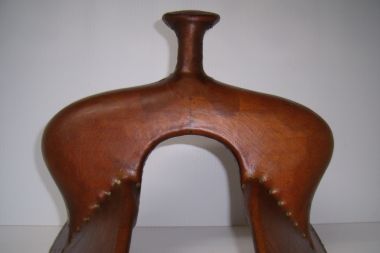 |
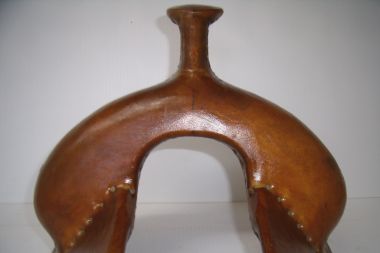 |
| Flatter top, less top slope, on a 12 1/2" Martha Jose fork | Lots of top slope on a 13" Chuck Sheppard fork |
2) Side Shape – Do they have a lot of undercut on the side? Do they round evenly down to the bars? Or are they somewhere in between? And what shape is the undercut? The side shape is similar within a tree style, but the gullet or hand hole height affects the final shape - it can get squashed with a low gullet height. Forks without undercut can be made very low and still keep the same basic shape. The fork width can also affect side shape depending on the top slope. Styles with more slope get lower on wider forks before rounding into the sides, giving less room for useful undercut on the sides. This explains why most of the wider fork styles commonly are flatter across the top.
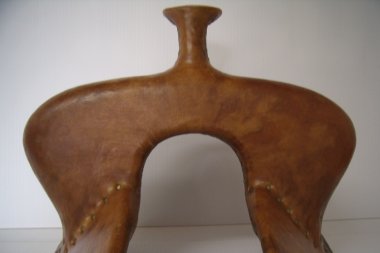 |
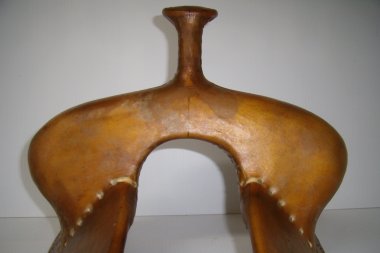 |
| Straighter undercut shape on 14" Sid Special fork | More curved undercut shape on 14" Modified Association fork |
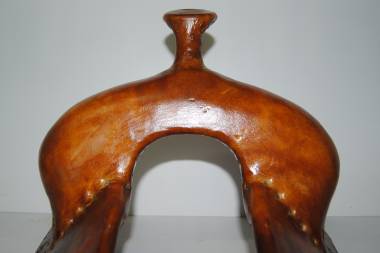 |
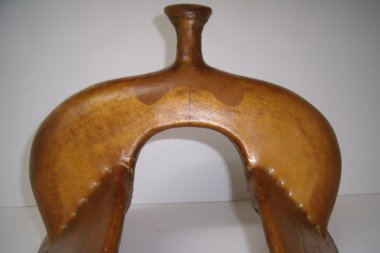 |
| Lower undercut on 12" Bowman fork | No undercut on 13" Buster Welch fork. Fork rounds all the way down to the bars. |
3) Back shape - Is it flat, like most fork styles? Or does it have back sweep, leg cut or both?
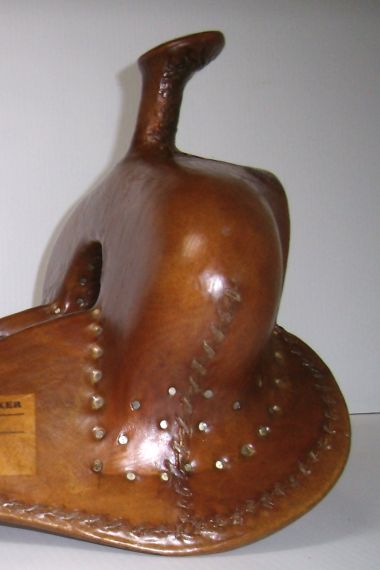 |
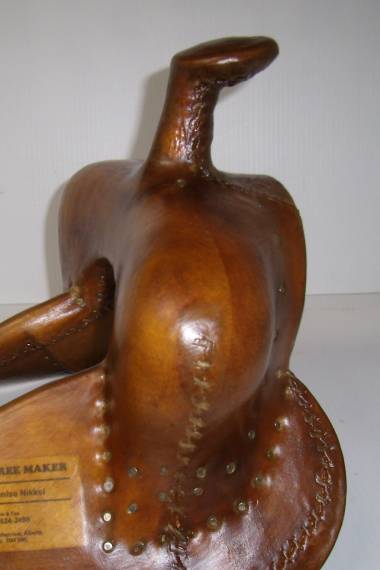 |
| Flat back on the fork is most common. | Extra wood is added to the back of the fork to make back sweep. |
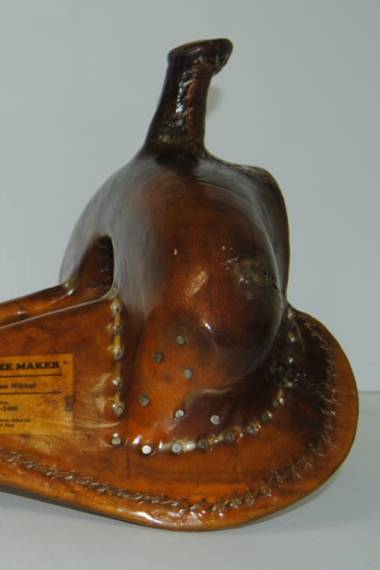 |
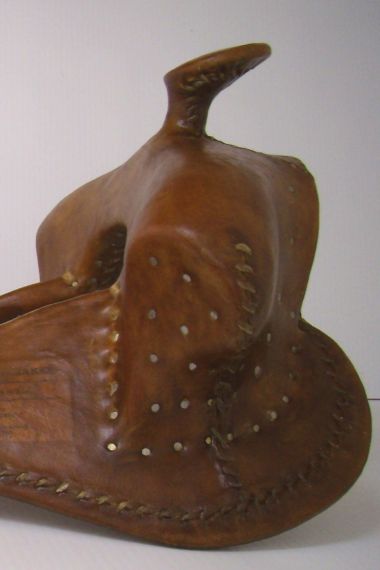 |
| Leg cut on a fork is made by removing wood to give more room for the rider's leg. |
An Old Moose tree has extra wood added for back sweep and leg cut taken out as well. |
Horn Type
While swell forks traditionally had metal horns, more and more are being ordered with wood post horns. We increase the stock thickness on wood post forks to 4 ¼” from our normal 3 ¾” to accommodate the look of the larger horn though, as always, we can make whatever stock thickness you request. We also make the gullet thinner a wood post fork compared to the same style of fork with a metal horn because we don’t need the thickness for the screws. This raises the hand hole height compared to the gullet height (please see Avoiding the Withers for further explanation) so we can lower the gullet height on these forks and still have enough clearance for the withers. However, if you lower it too far, you distort the side shape of the fork too much if it has undercut. We find that a gullet height of 7 ¾” works well on many wood post horn forks.
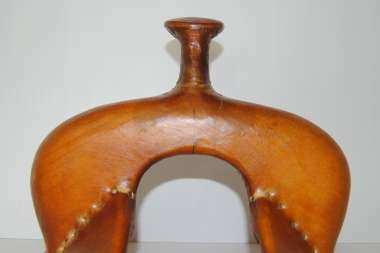 |
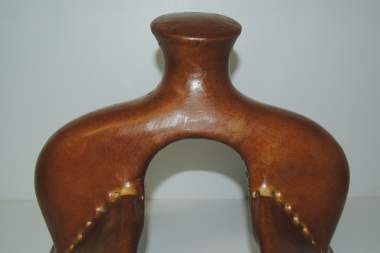 |
| 12 1/2" High Country fork with metal horn | 12 1/2" High Country fork with wood post horn |
